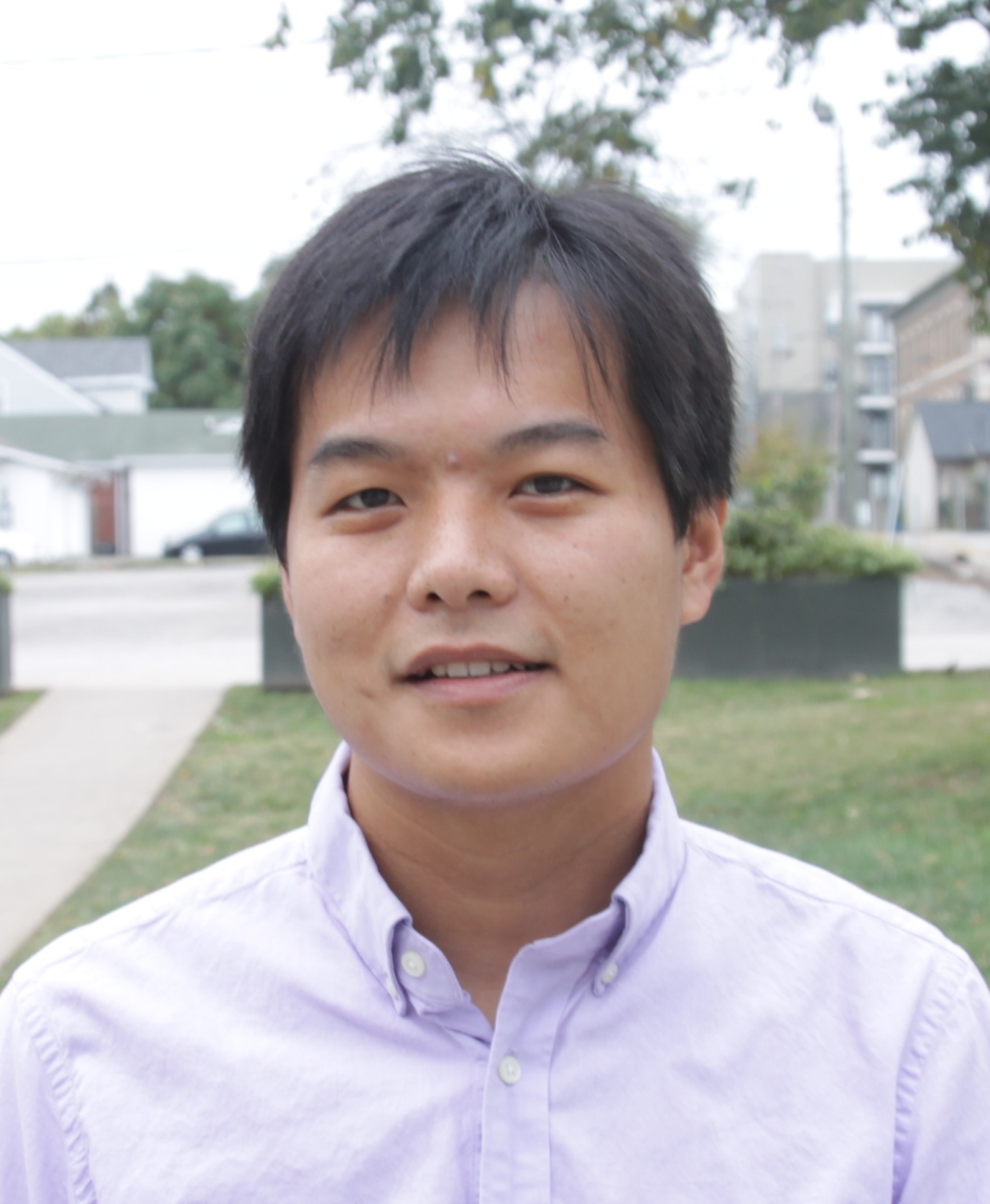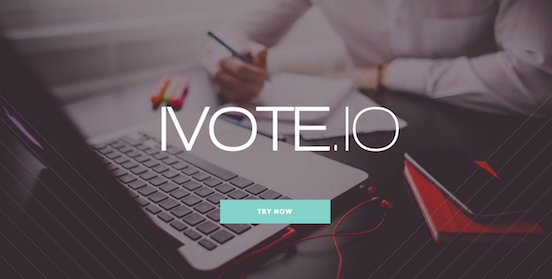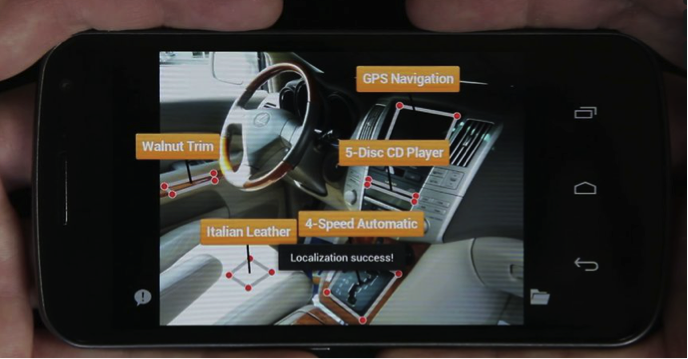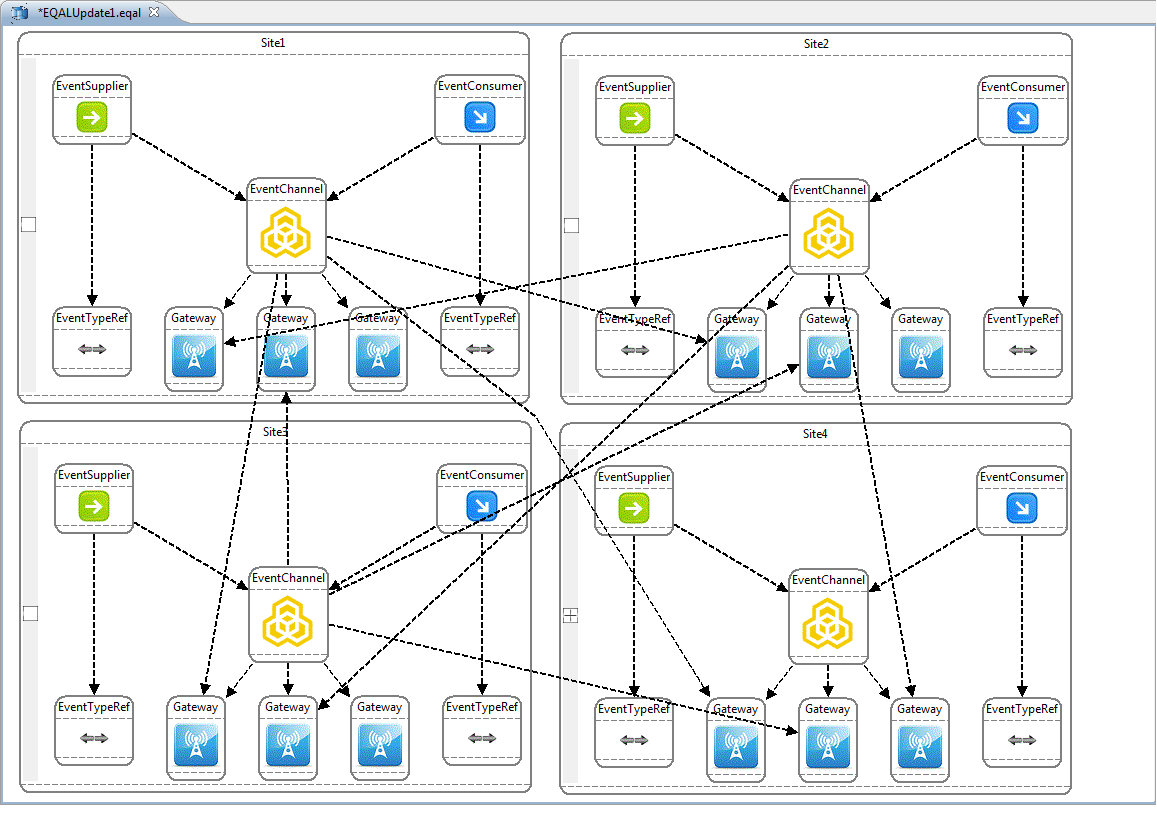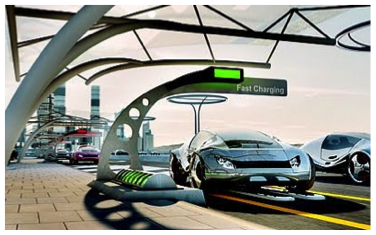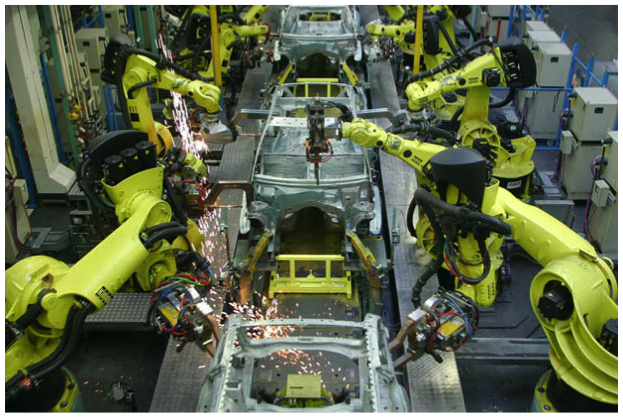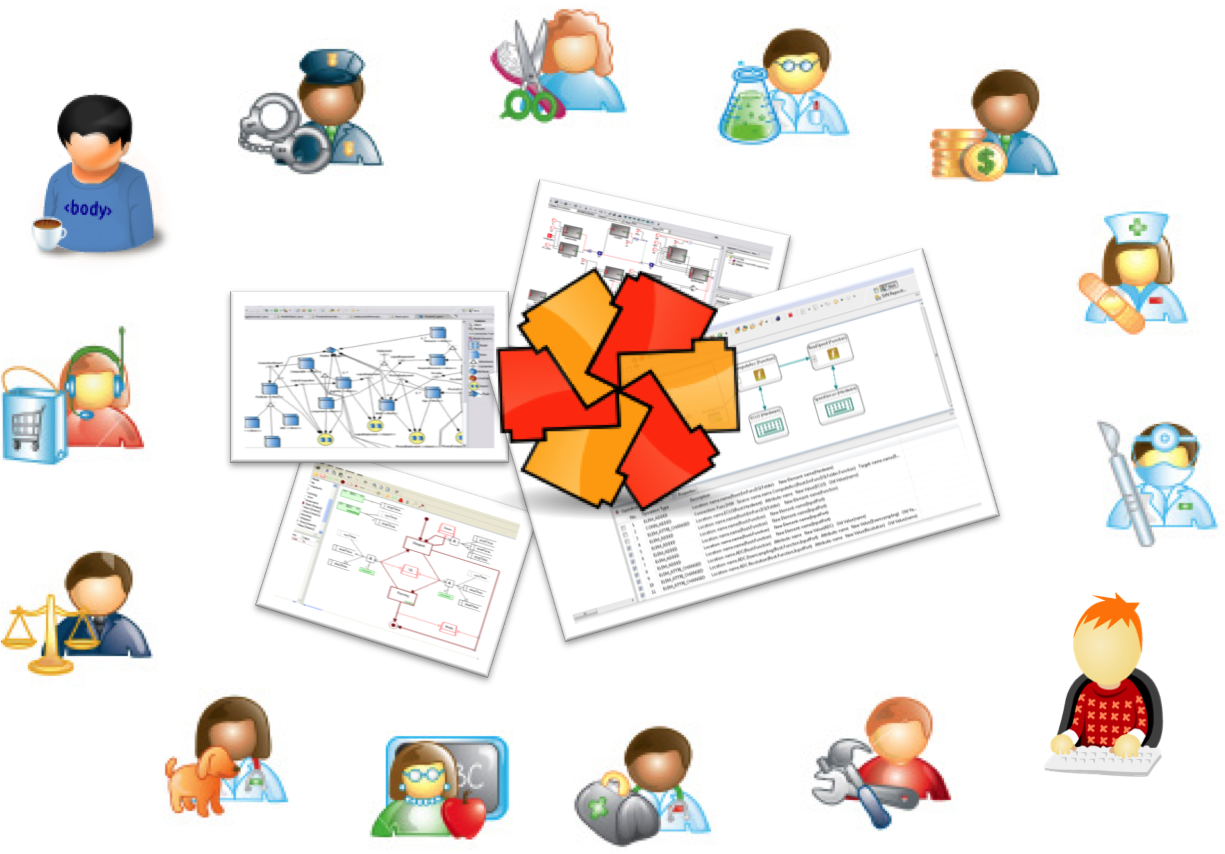YU SUN, Ph.D.
Assistant Professor at Cal Poly Pomona
I am currently an Assistant Professor in the Computer Science Department at California State Polytechnic University, Pomona (Cal Poly Pomona).
Building good software to solve real world problems is my passion. I am leading the SoftCom Lab to conduct research, consulting and startups with our talented students. Please check out our cool projects.
I am the Co-Founder of the startup company Ziiio - providing the large-scale mobile indoor navigation solutions. Previously, I worked as the Director of Engineering to lead the research and development for another cool startup company - Cloudpoint Labs, which focuses on high-precision 3D augmented reality for mobile platform. Before joining Cloudpoint Labs, I worked for Amazon Silk, the cloud-based split mobile web browser for Amazon Kindle Fire.
I worked as a Post-Doc Research Associate in Dr. Jules White's lab at the Institute for Software Integrated Systems in Vanderbilt University in 2014. I received my Ph.D. in Computer Science in December 2011 from the Department of Computer and Information Sciences at the University of Alabama at Birmingham, and my B.S. degree in Computer Science from Zhengzhou University, China in June 2007. My advisor is Dr. Jeff Gray.
My research interests include:
- Software Engineering & Model-Driven Engineering
- Cloud Computing and Distributed Systems
- Mobile Computing
- Augmented Reality
- Internet of Things
- Software Entrepreneurship
Journal Papers
-
2015
ROAR: A QoS-Oriented Modeling Framework for Automated Cloud Resource Allocation and Optimization
Yu Sun, Jules White, Sean Eade, and Douglas C. Schmidt, Journal of Systems and Software, 2015 (accepted for publication)
Paper: [PDF]
-
2015
Software Frameworks for SDR
Max Robert, Yu Sun, Yu Sun, Thomas Goodwin, Hamilton Turner, Jeff Reed, and Jules White, Proceedings of IEEE, vol.103, no.3, pp. 452-475, March 2015, doi: 10.1109/JPROC.2015.2391176
Paper: [PDF]
-
2013
A Demonstration-based Model Transformation Approach to Automate Model Scalability
Yu Sun, Jeff Gray, and Jules White, Journal of Software and Systems Modeling, DOI: 10.1007/s10270-013-0374-0, 2013 (accepted for publication)
Paper: [PDF]
-
2013
Automating the Management of Non-functional System Properties using Demonstration-based Model Transformation
Yu Sun, Jeff Gray, Romain Delamare, and Benoit Baudry, Journal of Software: Evolution and Process, DOI: 10.1002/smr.1606, 2013 (accepted for publication)
Paper: [PDF] [Wiley Online Library]
-
2010
Enabling Tool Reuse and Interoperability through Model-Driven Engineering
Zekai Demirezen, Yu Sun, Jeff Gray, and Frédéric Jouault, Journal of Computational Methods in Science and Engineering (JCMSE), vol. 10, no. 2, September 2010, pp. 187-202.
Paper: [IOS Press Online]
Book Chapters
-
2011
A WYSIWYG Approach to Support Layout Configuration in Model Evolutions
Yu Sun, Jeff Gray, Gerti Kappel, Philip Langer, Manuel Wimmer, and Jules White, Emerging Technologies for the Evolution and Maintenance of Software Models, edited by Jörg Rech and Christian Bunse, Idea Group, ISBN: 978-1-61350-438-32012, 2012, Chapter 4, pp. 92-120.
Paper: [PDF] [IGI Online Library]
-
2011
Model-Driven Automated Error Recovery in Cloud Computing
Yu Sun, Jules White, Jeff Gray, and Aniruddha Gokhale, Model-driven Analysis and Software Development: Architectures and Functions, edited by Janis Osis and Erika Asnina, Idea Group, ISBN: 978-161692-874-2, 2011, Chapter 7, pp. 136-155.
Paper: [PDF] [IGI Online Library]
Conference Papers
-
2015
Gray Computing: Assessing the Potential of Distributed Data Processing in Web Browsers
Yao Pan, Jules White, Yu Sun, and Jeff Gray, International Conference on Software Engineering (ICSE), Florence, Italy, May 2015
Paper: [PDF]
-
2015
Bridging Semantics with Physical Objects using Augmented Reality
Yu Sun, Hyojoon Bae, Sukanya Manna, Jules White and Mani Golparvar-Fard, IEEE International Conference on Semantic Computing (ICSC), Anaheim, CA, Feburary 2015
Paper: [PDF]
-
2014
A Model-Based System to Automate Cloud Resource Allocation and Optimization
Yu Sun, Jules White and Sean Eade, International Conference on Model Driven Engineering Languages and Systems (MoDELS), Valencia, Spain, October 2014, pp. 18-34.
Paper: [PDF]
-
2013
Model Transformation By Demonstration Debugger: End-User Support for Debugging Model Transformation Execution
Yu Sun, and Jeff Gray, European Conference on Modeling Foundations and Applications (ECMFA), Springer-Verlag LNCS 7949, Montpellier, France, July 2013, pp. 86-100.
Paper: [PDF]
-
2012
A Model-Driven Approach to Support Engineering Changes in Industrial Robotics Software
Yu Sun, Jeff Gray, Karlheinz Bulheller, and Nicolaus Von Baillou, International Conference on Model Driven Engineering Languages and Systems (MoDELS), Springer-Verlag LNCS 7590, Innsbruck, Austria, October 2012, pp. 368-382.
Paper: [PDF]
-
2012
UWoN (User Workflow Notation): A Visualization Tool for User Workflow Analysis and Modeling for Developing Healthcare IT
Xianjun Sam Zheng, Stefan Christov, Yu Sun, and Xiping Song, International Symposium on Human Factors and Ergonomics in Health Care: Bridging the Gap, Baltimore, MD, March 2012.
Paper: [PDF]
-
2011
A Demonstration-based Approach to Support Live Transformations in a Model Editor
Yu Sun, Jeff Gray, Christoph Wienands, Michael Golm, and Jules White, International Conference on Model Transformation (ICMT), Springer-Verlag LNCS 6707, Zurich, Switzerland, June 2011, pp. 213-227. (21% Acceptance Rate)
Paper: [PDF]
-
2011
A Platform-Independent Tool for Modeling Parallel Programs
Ferosh Jacob, Yu Sun, Jeff Gray, and Puri Bangalore, 49th Annual ACM Southeast Conference, Kennesaw, GA, March 2011, pp. 138-143.
Paper: [PDF]
-
2011
Apply Model-Driven Design and Development to Distributed Time-Triggered Systems
Yu Sun, Christoph Wienands, and Meik Felser, International Conference on Engineering and Meta-Engineering (ICEME), Orlando, FL, March 2011.
Paper: [PDF]
-
2009
Model Transformation by Demonstration
Yu Sun, Jules White, and Jeff Gray, International Conference on Model Driven Engineering Languages and Systems (MoDELS), Springer-Verlag LNCS 5795, Denver, CO, October 2009, pp. 712-726.
Paper: [PDF]
-
2009
Supporting Tool Reuse with Model Transformation
Zekai Demirezen, Yu Sun, Jeff Gray, and Frederic Jouault, International Conference on Software and Data Engineering (SEDE), Las Vegas, NV, June 2009, pp. 119-125.
Paper: [PDF]
-
2008
Tool Interoperability through Model Transformations
Yu Sun, Zekai Demirezen, Frédéric Jouault, Robert Tairas, and Jeff Gray, International Conference on Software Language Engineering (SLE), Springer-Verlag LNCS 5452, Toulouse, France, September 2008, pp. 178-187.
Paper: [PDF]
-
2008
Profiler Instrumentation Using Metaprogramming Techniques
Ritu Arora, Yu Sun, Zekai Demirezen, and Jeff Gray, ACM Southeast Conference, Auburn, AL, March 2008.
Paper: [PDF]
Workshop Papers
-
2012
Quality-Aware Academic Research Tool Development
Hyun Cho, Yu Sun, and Jeff Gray, International Workshop on Software Quality and Management (SQAM), held at the Asia-Pacific Software Engineering Conference (APSEC), Hong Kong, December 2012.
Paper: [PDF]
-
2011
Supporting Feature Model Configuration Knowledge Reuse using Demonstration-based Model Transformation
Yu Sun, Hyun Cho, Jeff Gray, and Jules White, Workshop on Product Line Approaches in Software Engineering (PLEASE), held at ICSE 2011, Honolulu, HI, May 2011.
Paper: [PDF]
-
2011
Key Challenges for Modeling Language Creation By Demonstration
Hyun Cho, Yu Sun, Jules White, and Jeff Gray, Workshop on Flexible Modeling Tools, held at ICSE 2011, Honolulu, HI, May 2011.
Paper: [PDF]
-
2010
A WYSIWYG Approach for Configuring Model Layout using Model Transformations
Yu Sun, Jeff Gray, Philip Langer, Manuel Wimmer, and Jules White, 10th Workshop on Domain-Specific Modeling (DSM), held at SPLASH 2010, Reno, NV, October 2010.
Paper: [PDF]
-
2010
MT-Scribe: A Flexible Tool to Support Model Evolution
Yu Sun, Jeff Gray, and Jules White, Workshop on Flexible Modeling Tools (FlexiTools), held at SPLASH 2010, Reno, NV, October 2010.
Paper: [PDF]
-
2008
Is My DSL a Modeling or Programming Language?
Yu Sun, Zekai Demirezen, Marjan Mernik, Jeff Gray, and Barrett Bryant, Workshop on Domain-Specific ProgramDevelopment (DSPD), held at International Conference on Generative Programming and Component Engineering (GPCE), Nashville, TN, October 2008.
Paper: [PDF]
-
2008
Model Transformations Require Formal Semantics
Yu Sun, Zekai Demirezen, Tomaz Lukman, Marjan Mernik, and Jeff Gray, Workshop on Domain-Specific Program Development (DSPD), held at International Conference on Generative Programming and Component Engineering (GPCE), Nashville, TN, October 2008.
Paper: [PDF]
Doctoral Symposia
-
2009
Model Transformation by Demonstration
Yu Sun, Doctoral Symposium, International Conference on Object-Oriented Programming, Systems, Languages and Applications (OOPSLA), Orlando, FL, October 2009.
Paper: [PDF]
-
2009
Model Transformation by Demonstration
Yu Sun, Doctoral Symposium, International Conference on Model Driven Engineering Languages and Systems (MoDELS), Denver, CO, October 2009.
Paper: [PDF]
Tool Demonstrations
-
2011
MT-Scribe: An End-User Approach to Automate Software Model Evolution
Yu Sun, Jeff Gray, and Jules White, Tool Demonstration, International Conference on Software Engineering (ICSE), Honolulu, HI, May 2011.
Video Demo: [Youtube]
-
2009
MT-Scribe: A Tool for Recording and Inferring Model Transformations
Yu Sun, Jules White, Jeff Gray, and Aniruddha Gokhale, Tool Demonstration, International Conference on Object-Oriented Programming, Systems, Languages and Applications (OOPSLA), Orlando, FL, October 2009.
Posters
-
2011
An End-User Demonstration Approach to Support Aspect-Oriented Modeling
Yu Sun, Student Research Competition, International Conference on Software Engineering (ICSE), Honolulu, HI, May 2011. (Top 5 Finalist in ACM SIGSOFT Student Research Competition 2011)
Paper: [PDF]
-
2010
Model Scalability Using a Model Recording and Inference Engine
Yu Sun, Students Research Competition, International Conference on Object-Oriented Programming, Systems, Languages and Applications (SPLASH/OOPSLA), Reno, NV, October 2010.
Paper: [PDF]
-
2009
Supporting Model Evolution through Demonstration-based Model Transformation
Yu Sun, Students Research Competition, International Conference on Object-Oriented Programming, Systems, Languages and Applications (OOPSLA), Orlando, FL, October 2009. (Top 5 Finalist in ACM SIGPLAN Student Research Competition 2009).
Paper: [PDF]
Dissertation
-
2011
Model Transformation By Demonstration: An End-User Centric Approach to Support Model Evolution
Yu Sun, Ph.D. Dissertation, Department of Computer and Information Sciences, the University of Alabama at Birmingham, Birmingham, AL, December 2011.
Paper: [PDF]
Large-Scale Indoor Navigation System
-
A startup company grown from a university research project. Ziiio builds turn-by-turn navigation systems for large-scale venues using mobile platforms. We specialize in making it easy for your visitors to navigate hundreds of locations and millions of square feet without getting lost.
More Info: [Ziiio Website]
iVote: A Web-based Real-time Classroom Response System
-
Audience response systems such as iClicker have been successfully applied in classrooms to enhance the learning, engagement, and participation of students. Although the dedicated response device is easy to use, a few issues prevent it from being adopted at a larger scale: 1) students have to purchase and remember to bring the device to classrooms; 2) the device is not flexible to support a diverse range of questions (e.g., iClicker only support questions with a maximum of 5 answer options); 3) the device does not support two-way interactions (e.g., the device cannot receive feedbacks). To address these issues, we have built a web-based response system that can be directly used in any of the mobile devices or computers. Instructors are enabled to customize questions, view real-time response status, and send feedbacks to students.
More Info: [iVote Website]
High-Precision Mobile Augmented Reality
-
Hybrid 4-Dimensional Augmented Reality (HD4AR) provides high-precision and robust mobile augmented reality using millimeter-level alignment of cyber information with real-world imagery. A user can snap an image of the physical world, upload the photograph to a cloud-based server, and receive an augmented image back that visualizes cyber-information on top of it in seconds. This is a commerialized university research project based on computer vision, mobile and cloud computing.
Video Demos: [Youtube Channel]
Amazon Silk
-
A key challenge with mobile web browsers is that the browsing performance is always limited by the networking and computation capacity available to the device at a particular location of use. The Amazon Silk mobile web browser, originated from a research project, is based on a split architecture, where certain browser processing is performed in Amazon’s powerful cloud servers and the client devices only handle the lightweight computation related with rendering and UI control.
More Info: [Team Blog]
Model Transformation By Demonstration (MTBD)
-
When models become the first-class entities for constructing software systems, the models often need to be transformed and evolved to adapt to various system changes, such as model refactoring, model scalability, and aspect-oriented modeling. Instead of using the traditional approach to write transformation programs to automate the evolution process, MTBD is an end-user programming solution that allows end-users (e.g., domain experts and non-programmers) to demonstrate how a transformation should be done on a concrete example by directly editing the source models. The MTBD engine records user operations and automatically infers and generates the executable transformation pattern that can be applied generically to any source model. MTBD has been applied to automate a number of model evolution scenarios. Users do not need to have a programming background or understand the abstract metamodel definitions.
Publications: [MODELS '09] [SoSym '13] [JSEP '13]
Time-Triggered Systems Modeling Language (TTS-ML)
-
TTS-ML was designed to support the development and maintenance of distributed time-triggered communication systems used by the Siemens eCar project (i.e., the electrical vehicle research project conducted by Siemens Corporate Research). The modeling language allows for efficiently modeling physical and logical aspects of the system as well as quality of service requirements (QoS). A model completion step using scheduling and arbitration algorithms derives missing communication information. A code generation step creates target platform- and controller-specific code from the model automatically.
Publication: [ICEME '11]
UWoN (User Workflow Notation)
-
UWoN is a modeling environment to model user workflow process in user interface (UI) design, which was applied to a healthcare intervention application supported by Siemens Corporate Research. The modeling environment takes the graphical workflow model as the input, generates the simulation code based on the rich and rigorous semantics of the Little-JIL process definition language, which helps UI designers to better analyze and evaluate the UI performance.
Publication: [HCS '12]
Automax
-
Automax is a model-based development environment implemented to support robotics development for industrial robotics assembly lines. Automax enables a domain expert (who is not a computer scientist) to model robot action sequences with timing requirements, and automatically generate embedded robotics controlling code. This project has been conducted with Bullheller Consulting, a software firm whose core robotics software is deployed in over 2000 robots used at the Mercedes-Benz plant USA in Alabama.
Publication: [MODELS '12]
Live Model Transformation By Demonstration (Live-MTBD)
-
When a large group of users are enabled to contribute to model evolution activities using MTBD, reusing model transformation patterns at the appropriate scenario becomes an essential issue to enhance knowledge reuse. Live-MTBD is an extension to the MTBD framework that contains a set of “live” features: 1) live demonstration provides a new type of demonstration approach that encourages creation of model transformation patterns; 2) live sharing makes all generated patterns available to users for reuse, and 3) live matching helps users to reuse the correct pattern at the appropriate time.
Publication: [ICMT '11]
Model Transformation By Demonstration Debugger (MTBD Debugger)
-
The capability of MTBD is undermined if users cannot debug a generated transformation pattern at the same level of abstraction to which the demonstration was performed. Thus, an MTBD Debugger was developed based on the MTBD execution engine, enabling users to step through the transformation execution process and track the model’s state during a transformation. MTBD Debugger focuses on end-user friendliness, so the low-level execution information is hidden during the debugging process.
Publication: [ECMFA '13]
A Model Engineering Approach to Tool Interoperability
-
The integration of various tools is a common requirement throughout the software development process. It is often desirable to consult several tools that perform similar functionalities in the same domain to obtain different perspectives and results to assist design and maintenance decisions. In many cases, tool interoperability requires the generalization of tool-specific data, which requires homogenizing the data such that intellectual assets can be shared through a common framework (e.g., the integration of results from various clone detection tools). This tool demonstration summary presents a software language engineering solution technique that uses Model-Driven Engineering to address tool interoperability. A specific focus of the project is to apply model transformation to the task of homogenizing different data formats among similar code clone detection tools.
Publication: [SLE '08]
Contact info
- 3801 West Temple Avenue
Pomona CA 91768 - Email: yusun@cpp.edu
- Phone: +1 909 869 3449
- Website: http://yusun.io
